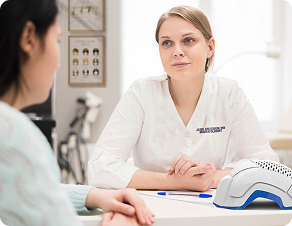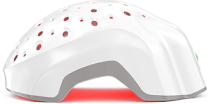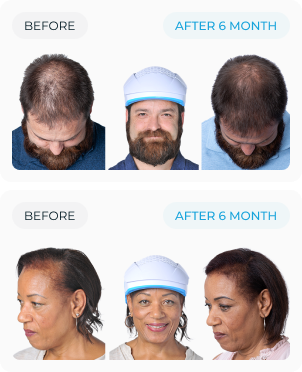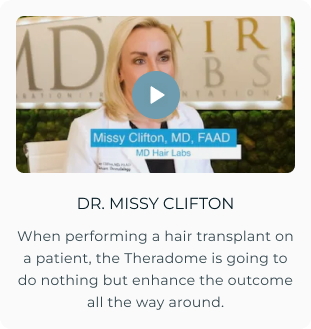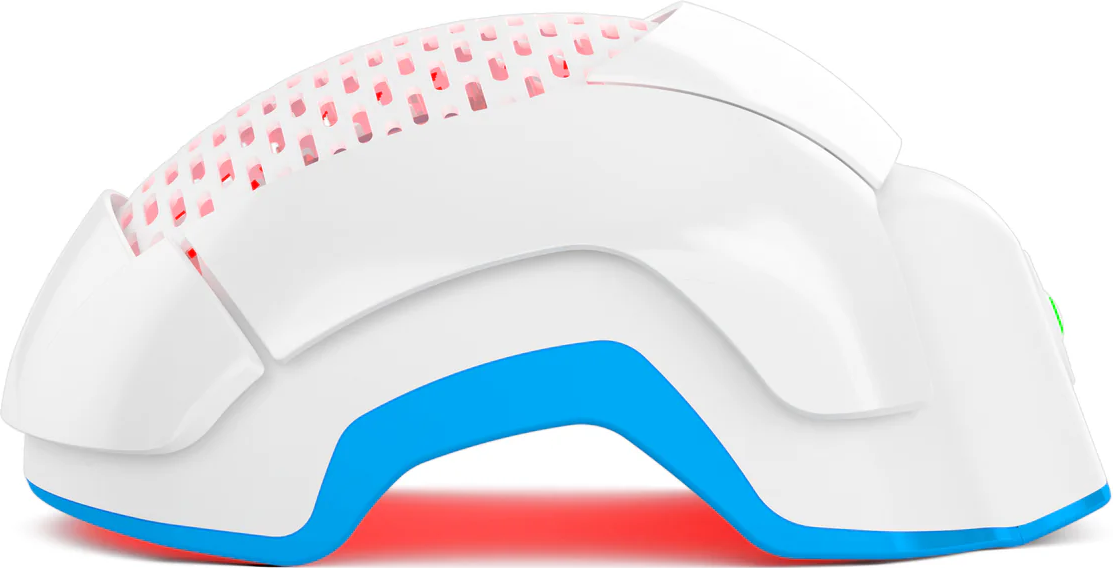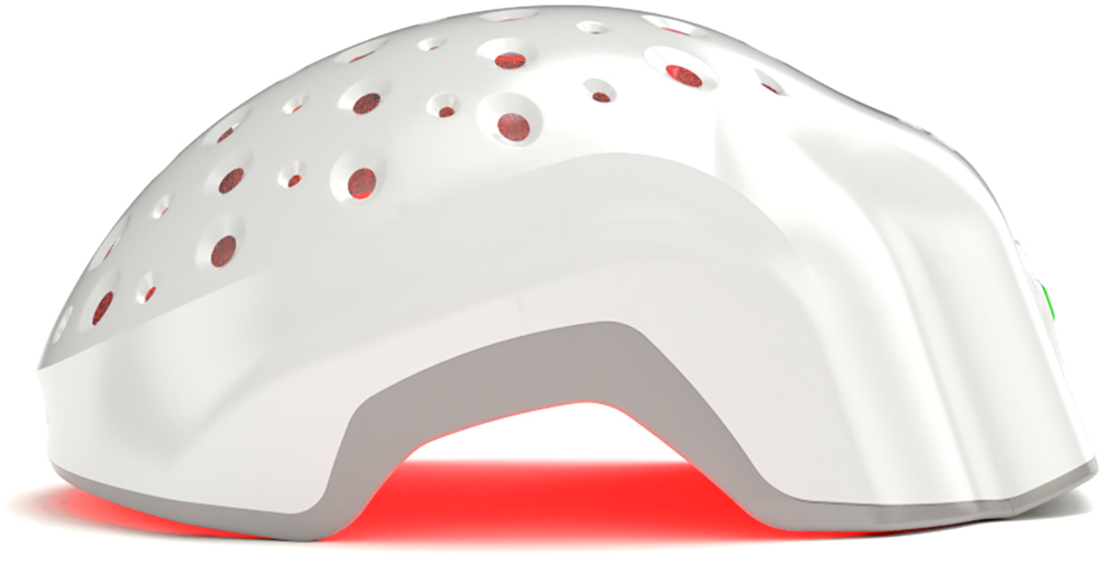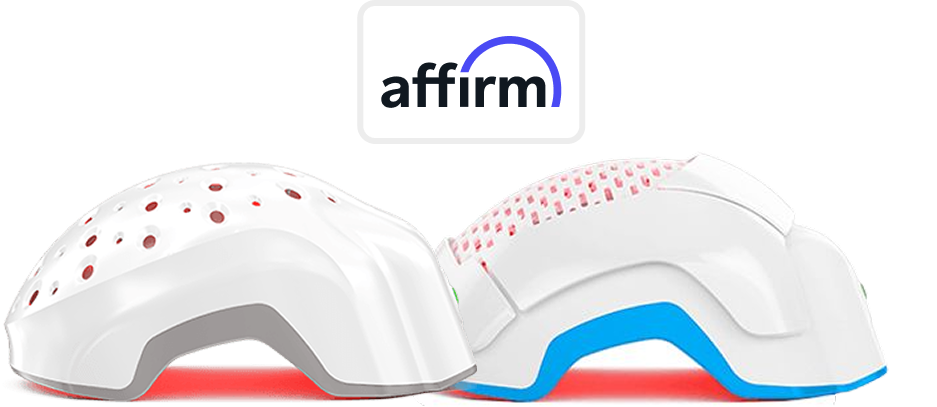When it comes to hair growth products or anti-balding treatments, you will find many solutions, from hair serums to oral medications, that don’t quite deliver on their promises. But if you’re looking for some proven remedies that actually helps stop hair loss and stimulate healthy hair growth, you want to stick to treatments that have gone through the FDA’s rigorous approval process.
These treatments are backed by science, real-world testing, and clinical studies. Currently in 2025, there are three FDA-approved hair growth products for the treatment of baldness or hair loss.
- Minoxidil
- Finasteride
- Low-level laser therapy (LLLT)
In this blog, we're breaking down the top 3 FDA-approved hair growth treatments, each with its own mechanism and benefits, to help you find the right fit for your hair goals.
Why Is FDA Approval and FDA Clearance Important in Hair Growth Treatments?
When it comes to hair regrowth, not all treatments are created equal, and that’s where FDA approval and FDA clearance come into play. The U.S. Food and Drug Administration (FDA) is the government agency responsible for protecting public health by ensuring the safety, efficacy, and security of human and veterinary drugs, biological products, and medical devices sold in the United States. It holds drugs and medical devices to high standards, but there’s an important distinction between FDA-approved and FDA-cleared.
Minoxidil and Finasteride are FDA-approved, meaning they’ve been tested extensively for effectiveness and safety as medications for hair regrowth. This approval process is rigorous, requiring both clinical trials and proven effectiveness for specific medical claims.
Laser Phototherapy (LPT), on the other hand, is FDA-cleared rather than FDA-approved. As a medical device, LPT underwent a different vetting process to establish that it’s safe and effective for its intended use. The FDA clearance signifies that the device meets strict safety standards and is effective as a non-invasive treatment option, but because it’s not a drug, it does not require FDA approval in the same way that medications do.
This difference is crucial: FDA approval is required for drugs that alter body chemistry, while FDA clearance applies to devices that offer therapeutic benefits without introducing chemicals into the body. Both signify credibility and safety but reflect different categories in the FDA’s regulatory process.
Which Hair Growth Products or Treatments Are FDA-Approved?
The three popular hair loss products: Minoxidil, Finasteride, and Low-level laser therapy (LLLT), have earned the FDA’s approval and clearance because they’ve been proven to do what they claim, i.e., stimulate growth, thicken thinning hair, and slow down loss.
Let's take a closer look at three FDA-approved hair growth treatments that have proven their effectiveness.
1. Minoxidil
Minoxidil, most widely known by its brand name, Rogaine, is a go-to topical treatment for hair growth, offering FDA approval that reassures users it’s effective and safe. Originally developed as an oral medication for high blood pressure, researchers noticed an eyebrow-raising side effect – hair growth. That’s right, what started as a heart medicine turned out to have the added benefit of promoting hair follicle activity, leading to its rebranding as a hair loss treatment.
Minoxidil is a vasodilator, meaning it widens blood vessels and boosts circulation to your hair follicles. By increasing the nutrient supply to hair follicles, it encourages more robust growth and even revives follicles that might have become dormant. Studies have shown that it can improve hair follicle count by 12-18% over a 48-week period.
Topical minoxidil is only FDA-approved for Androgenetic alopecia (male-pattern baldness). But, trichologists sometimes prescribe it off-label to treat other hair loss such as:
- Alopecia areata
- Chemotherapy-induced hair loss
- Scarring alopecia
- Monilethrix
- Hereditary alopecia or hypotrichosis
Oral minoxidil is also FDA-approved, but only for patients with high blood pressure that haven't responded to other treatments.
Forms & Usage
You’ll find Minoxidil in various forms, from foams and sprays to solutions, with concentrations of 2% and 5% – the latter being the more potent. It’s typically applied once or twice daily on a clean, dry scalp, focusing on the thinning areas. It’s crucial to be consistent, as the effectiveness of Minoxidil hinges on regular usage, and the results can take 3 to 6 months to become noticeable.
Potential Side Effects
While Minoxidil is generally safe, some potential side effects may occur:
- Scalp dryness or irritation: A common side effect, often managed with gentle hair products.
- Initial shedding: Don’t panic if your hair seems to shed more initially; this phase usually subsides as stronger hair grows in.
- Dizziness or heart palpitations: Rare, but if experienced, consult a healthcare provider immediately.
The bottom line is, Minoxidil is all about being consistent and patient in order to get the positive results.
2. Finasteride
Finasteride, known by its brand name Propecia®, takes a more targeted approach than Minoxidil. It is a DHT blocker and is approved by the FDA for the treatment of:
- Male pattern baldness
- Benign prostate hyperplasia (prostate enlargement but not due to cancer)
Finasteride is available in both oral and topical forms, but only oral medication is FDA-approved. It manages hair loss by reducing levels of dihydrotestosterone (DHT), a hormone that shrinks hair follicles, leading to hair thinning and loss. By blocking the conversion of testosterone into DHT, Finasteride has shown an ability to reduce DHT levels by up to 70%, thereby helping to maintain hair growth and possibly revive thinning areas.
For those looking for a DHT-focused solution for hair loss – particularly for male pattern baldness or androgenetic alopecia – Finasteride can be effective. And since it targets the root hormonal cause, it can be a powerful long-term treatment.
Forms & Usage
Typically available as a daily oral pill, Finasteride is designed to be taken consistently. Missing doses can reduce its effectiveness, so daily adherence is key. While primarily aimed at men, it’s important to note that Finasteride is not suitable for women who are pregnant or may become pregnant.
Potential Side Effects
Though generally well-tolerated, some users may experience:
- Decreased libido: A common side effect, which may or may not resolve with continued use.
- Erectile dysfunction: Rare but notable, potentially affecting sexual performance.
- Mood changes: Some users report anxiety or mood swings, though this is infrequent.
As with any medication, discussing potential side effects with a healthcare professional before starting Finasteride is a smart move, especially given its hormonal impact.
3. Laser Phototherapy (LPT)
The third FDA-cleared hair growth treatment is Laser Phototherapy (LPT), sometimes referred to as Low-Level Laser Therapy (LLLT). Unlike the chemical and hormonal pathways of Minoxidil and Finasteride, LPT uses light energy to stimulate cellular activity in hair follicles. The FDA has cleared several devices that utilize this therapy, including the Theradome Hair Helmet, which emits specific wavelengths of light to improve blood flow, increase cellular activity, and ultimately promote hair growth.
While it may sound futuristic, the science is quite straightforward: the light energy stimulates follicle cells to work overtime, effectively "waking up" dormant follicles and thickening existing hair.
Forms & Usage
LPT is available in different devices, from laser combs to wearable helmets like Theradome. The devices are typically used a few times a week for a set period – around 20 minutes per session. Since the treatment is non-invasive, the risks are minimal, making it an attractive option for those wanting to avoid topical or oral treatments.
Potential Side Effects
One of the biggest pros of LPT is its low side effect profile:
- Mild scalp warmth or tingling: Some users may feel a warming sensation during use, which is generally harmless and subsides quickly.
Unlike Minoxidil and Finasteride, there’s no risk of hormonal changes or scalp irritation, making LPT a popular choice for many.
Which of the 3 FDA-Approved Treatments is Most Effective for Hair Growth?
Effectiveness
When it comes to effectiveness, all three options – Minoxidil, Finasteride, and Low-Level Laser Therapy (LPT) – have earned their FDA stripes.
Minoxidil and finasteride are two of the most researched and proven hair loss treatments. Many studies over many years have shown they are effective and generally safe for treating hair thinning and hair loss.
Finasteride, which is taken as a pill, works by reducing the amount of DHT (dihydrotestosterone) in your body by about 70%. DHT is a key hormone that causes male pattern baldness. Upto 88% of people who use finasteride see their hair loss slow down within three months. While it significantly slows hair fall, it doesn't usually stop it completely.
Minoxidil, a topical treatment, works best when started within the first five years of noticing male pattern baldness. It can improve follicle count by up to 18%. Although it can be a very effective treatment for many, results can be different for each person.
Low-level laser therapy (LLLT) is still being studied, but early results are promising. A review of several studies in 2021 found that LLLT helped hair grow without major side effects. Other research suggests that combining LLLT with minoxidil or finasteride might work even better than using LLLT by itself.
But here's where LPT steals the spotlight. Unlike Minoxidil and Finasteride, which target specific areas of hair loss, LPT has been shown to boost hair growth across the entire scalp, enhancing thickness, density, and follicle health. LPT offers comprehensive scalp treatment in one go, without messy application or nasty side effects.
Ease of Use
LPT devices are hands-off and hassle-free, while Minoxidil and Finasteride demand a little more commitment. Minoxidil requires daily topical applications, often twice a day, and Finasteride requires regular oral dosing.
Meanwhile, LPT devices like Theradome are more convenient to use. You just need to wear the device for a 20 mins of treatment session, and the device will work on its own.
So, if you prefer a more passive solution, LPT can be your match.
Side Effects
Both Minoxidil and Finasteride come with potential side effects. For Minoxidil, it’s typically minor scalp irritation, but Finasteride’s potential side effects can include hormonal imbalances and decreased libido, making some users cautious.
That’s where LPT stands out. With no systemic side effects and only mild scalp warmth or tingling reported in rare cases, LPT is the safest option for those who want results without the risks.
Check out the reviews of Theradome laser helmets from our customers.
Pricing
Minoxidil and Finasteride come with ongoing costs for as long as you use them, potentially for life. Each refill keeps the results coming, but if you miss a dose, your hair might start falling out again. Laser Phototherapy (LPT), on the other hand, is more of a one-time investment. Devices like the Theradome helmet offer lifetime usability without the continuous cost of creams, pills, or foams.
You’re set with a single purchase – no ongoing cash outlay and no lingering side effects. In the long run, this can make LPT a wallet-friendly option with benefits that last as long as you keep up with treatments.
Which Hair Growth Products Are Not FDA-Approved?
Not all hair growth products make the FDA cut. Products like herbal remedies, natural oils (e.g., pumpkin seed oil, olive oil), and mechanical scalp stimulators lack sufficient scientific evidence and clinical trials to meet FDA standards for approval.
While they may show promise in some preliminary studies, their efficacy isn’t proven at the level required for FDA clearance.
Some of the hair loss treatments that have not yet been approved by FDA are:
- Topical Finasteride
- Dutasteride
- Plate Rich Plasma (PRP)
- Supplements like biotin
- Natural Oils like rosemary, olive, pumpkin seed
- Saw Palmetto
Final Thoughts on FDA-Approved Hair Growth Products and Treatments
When dealing with hair loss, sticking to FDA-cleared treatments gives you a scientifically-backed path to regrowth. From the vasodilating power of Minoxidil to the DHT-blocking capabilities of Finasteride, and the light-stimulating wonders of LPT, these options are effective, safe, and designed to help you reclaim your hair and confidence. Choose wisely, and remember – consistency is key.
If you're considering Laser Phototherapy (LPT) for hair growth, Theradome helmets are an excellent choice. Theradome offers two powerful options: the premium Theradome PRO and the standard Theradome EVO laser hair growth device. Both helmets are FDA-cleared, making them safe and reliable choices for treating hair loss. These hands-free devices use advanced laser technology to stimulate your scalp, boost blood flow, and promote healthier, thicker hair growth. While the PRO model features 80 lasers for faster results, the EVO's 40 lasers still provide effective treatment at a more affordable price point. With consistent use, both helmets have shown impressive results in clinical studies, helping users improve their hair growth journey.
